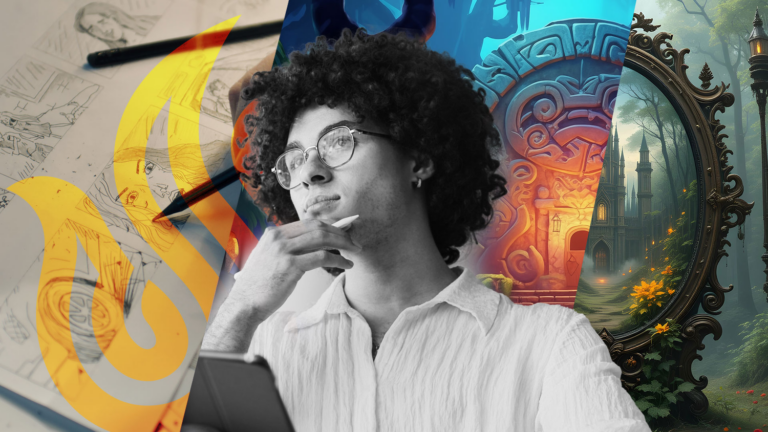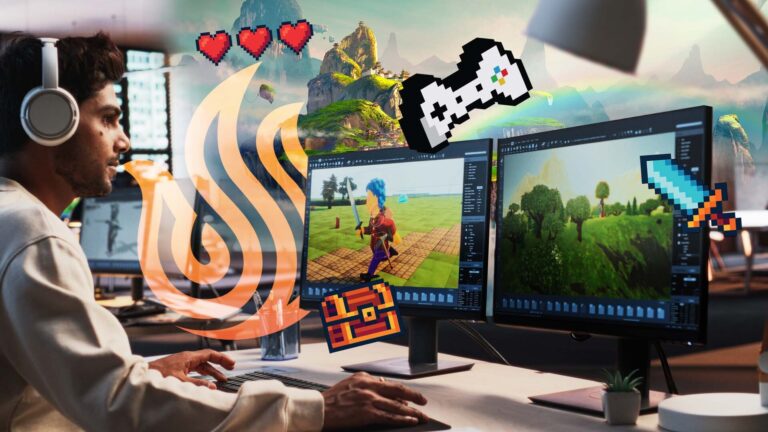Are you inspired to start creating 3D animation? In this modern digital age, there are 3D animations everywhere you look. Also, there is no shortage of demand considering the sheer volume of 3D animation in films, television, video games and video sharing sites. Anyone who aspires to animate 3D objects and spaces has a lot of opportunities. Not only does animation offer a potent creative outlet, but it also provides you with ample opportunities. The entertainment industry is highly rewarding for those who take the time and effort to hone their craft.
What is 3D Animation?
The art of 3D animation is a complex topic but can be boiled down to one simple goal. The idea is to bring a fictional world to life through digital manipulation of the objects and characters in a virtual space. The creation of these objects and characters are often just as important as how they are animated. In fact, many character designs are created specifically with animators in mind.
Certain body types and features facilitate smooth movement, while other designs present challenges for the animation team. A huge part of 3D animation is the ability to plan ahead so your characters are simple to rig. An animation rig is how most characters move around a scene. By simulating the bone structure of that character, a rig allows you to make believable animations that immerse your audience.
How is 3D Animation Created?
Animation projects come in all shapes and sizes. That being said, there are several components that almost all published animations are fueled by. Naturally, there is specialized software that artists use to bring life to 3D spaces. That software often needs powerful hardware to operate efficiently. Animators must also apply a variety of techniques to make their work look appealing to the eye.
These tangible components are supported by the final pillar of production, teamwork. Bringing a whole world to life on screen requires some heavy lifting. While it may be possible for one person to finish an animation, it wouldn’t be very practical. The reality is dozens of artists must all come together to finish an animation project.
Software
The complexity of animation requires specific programs that are built just for animation itself. The most popular of these applications is Autodesk Maya. This juggernaut of the industry has been used by professional film and video game studios for over a decade. Of course, the name recognition comes with a hefty price tag. The good news is that many free or less expensive alternatives have released over the years. A great example of this is Blender. Blender is a completely free animation software that provides most of the functionality of Maya, albeit with a few extra steps and caveats.
Hardware
The hardware needed to run animation software effectively is on par with advanced gaming PCs. Both the GPU and CPU will need to support the intensive processes associated with such programs. In particular, rendering each scene requires the most horsepower. This process occurs after you finish animating a shot. Your PC must make the finishing touches to a scene before you can add it to a project. This process is already long enough with a strong PC. The last thing you want is to wait days to find out how your animations turn out. The long delay of weak hardware will make it difficult to perform minor adjustments to your work.
Techniques
If you have been watching or playing animated content for many years, then you have most likely noticed patterns in how certain objects and character types move about the screen. These patterns are indicative of the tried-and-true techniques passed down by animators for generations. Since animation is such a specific craft, other animators are about the only source of information on the subject. Everything another animator has figured out can be used to your advantage to save time. The animation community is constantly solving problems and providing those solutions to the rest of the animation world. This is the primary reason why animation quality continues to improve every few years and why works from the same era appear to be so similar.
Teamwork
Last, but not least, is the power of working as a unit. Modern animation projects are often composed of hundreds of staff members. As you can imagine, it takes a bit of coordination to keep that many artists on the same page. Even the best animators must work on their interpersonal and communication skills. Working together with everyone on the team is paramount to getting anything done on time. It’s not just about avoiding problems, however. Building morale and having fun with the people you are spending so much time with will lead to a better final product. Audiences can tell when a production team had fun while making the animation. That fun extends to each viewer and is a key ingredient to making a timeless classic.
How Can I Learn 3D Animation?
Getting started in the world of 3D animation can seem quite daunting at first. Learning as much as possible about the industry and your potential roles will help you overcome any anxiety you may feel. While everyone has their own path, there are two main ways you can break into 3D animation. Here is a look at both and an overview of which method provides the best results.
Learning on Your Own
The internet age has opened up a wealth of information and tutorials you can view online. Many aspiring animators think that doing a YouTube search and following a tutorial is all they will need. While video tutorials are excellent for learning how to change your tire, they fall short of conveying the proper foundation an artist will need to take their industry by storm. It is possible to find some good educational content on video platforms, but you will also need to sift through plenty of nonsense and incorrect techniques. An expert can tell which pieces of advice to follow, but someone just starting out has no way of discerning which videos are providing good information.
As tempting as it can be to surf the web for these answers, it opens you up too many problems down the road. A few bad habits and improper techniques can sour an audience’s perception of your work. It only takes a few small animation errors to break someone’s immersion. You can avoid many of these pitfalls by attending a formal education program. Let’s take a closer look at why that is.
Attending a Formal Education Program
There are several major advantages to attending a formal curriculum for animators. From experienced instructors to authentic animation workstations, the resources available at a creative arts college give you the best possible chance of starting your career off on the right foot. Here is a breakdown of how these advantages help improve your job outlook.
Benefit #1: Instructors with Real Experience
The instructors employed by creative arts colleges have held the same positions you are applying once you graduate. To teach these courses, you must work on a completed project that was published into the public realm. When you enroll in classes and learn as much as you can from someone who has already succeeded in the industry you get a competitive advantage. Many instructors have worked on dozens of projects and have decades of knowledge to share. Not only can they tell you exactly what potential employers will want, but they can also steer you away from all the mistakes they made when first starting their animation journey.
Benefit #2: State-Of-The-Art Equipment
Professional studios are filled to the brim with advanced equipment that the average person wouldn’t be able to acquire solo. A huge benefit of attending a creative arts college is that you can practice working in a similar environment to what you can expect once employed at a studio. Your confidence will be greater when you land that first position. Being introduced to studio culture will also allow you to build up your software and teamwork skills while working on various group assignments.
Benefit #3: Accurate and Topical Information
Like all tech industries, animation is constantly evolving at a rapid pace. This means the average YouTube video gets outdated fairly quickly. However, a creative arts college with many connections within the industry can keep up on all the latest trends and new technologies. The curriculum is updated constantly to reflect the exact topics and techniques that students need to focus on. As with the next benefit, having connections within the field is one of the most important resources you can obtain.
Benefit #4: Building a Network
In many cases it isn’t what you know, but who you know. That worn out phrase has been used so much because it still holds true today. The world of 3D animation and entertainment in general is no exception. Attending a formal animation program will instantly put you into contact with many like-minded artists and creators. You also get to know the experienced instructors and faculty members. Everyone you meet can potentially lead to your dream job. Genuinely getting to know as many people as possible and forging connections you can call upon later may just be the best way to improve your chances of success as an animator.
Final Thoughts
Overall, the rising popularity of animated content means artists will have the ability to find plenty of opportunities working in animation. If you have been inspired by the digital worlds created by others than you already have the most important trait of any great animator. The ability to let your imagination take you to new places. Diligently learning the craft while holding onto that skill will give you the best chance of landing an entry-level job at an exciting studio. From there, a rewarding journey awaits you in the world of 3D animation.
Interested in learning more about how to create 3D animation? You can experience what it’s like being in the full animation and VFX pipeline in our Digital Art & Animation program. Our Digital Arts & Animation courses have been designed with input from industry connections, so University of Silicon Valley students learn the skills studios are looking for.
Start your animation career today and learn what it takes to become a 3D animator. The 3D Animation concentration delivers premium instruction by skilled industry mentors. You’ll master the fundamentals of animation, learn character rigging, and so much more.
University of Silicon Valley is uniquely poised to offer a meaningful and valuable education for 21st century students. We believe in an education that directly correlates with the work you’ll be doing after you graduate. Interested in learning more? Contact Us today.


